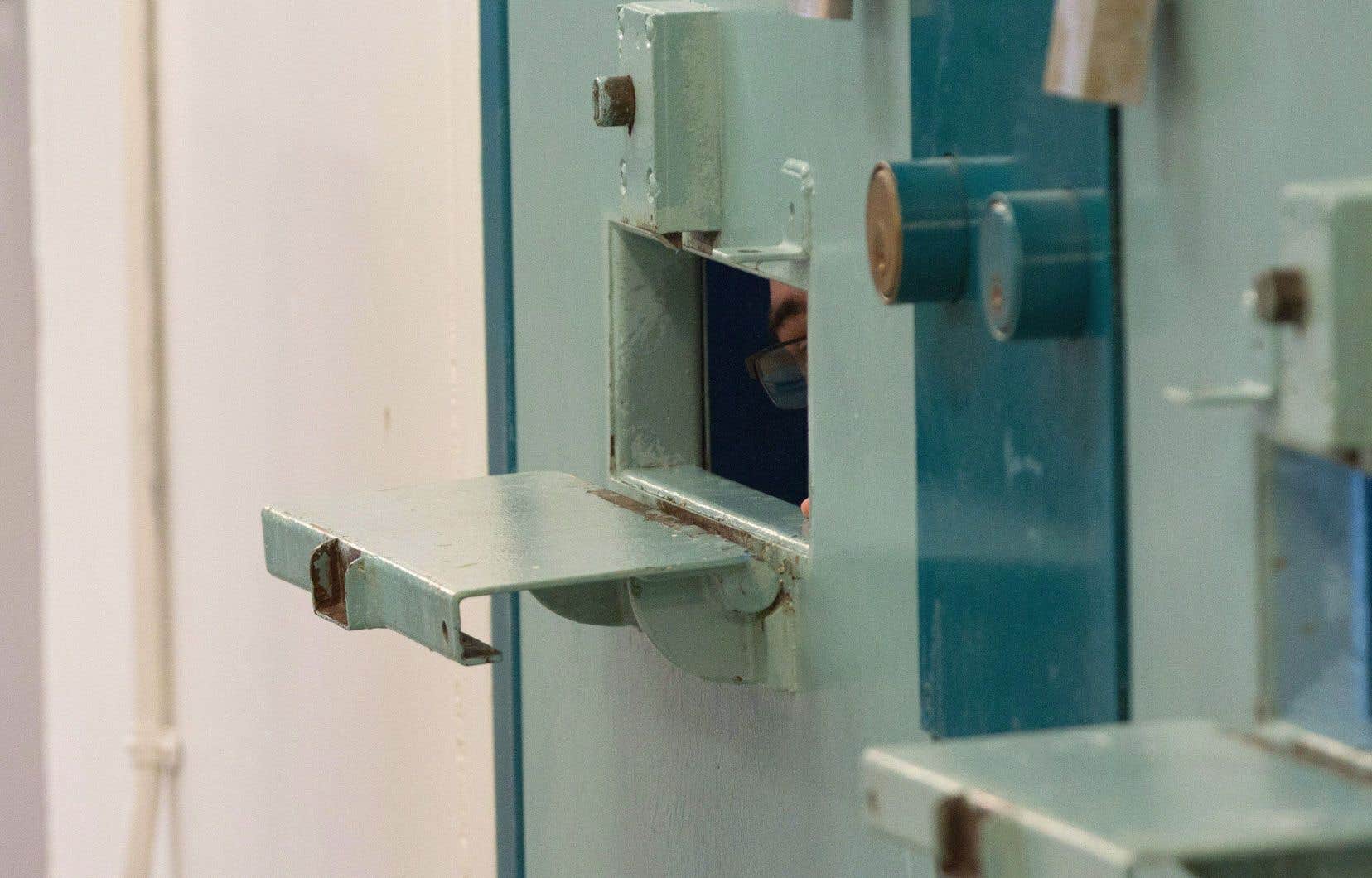Between 2009 and 2022, prisons under Quebec jurisdiction recorded an increase in the death rate of 87%, shows the work of a research team made public today.
Behind the bars of these prisons, the increase in death rates has been constant since 2009-2010. This increase, far from being negligible, is clearly revealed by a “very clear” ascending linear curve, indicate the researchers in this “state of affairs” of “deaths in provincial prisons”.
“By comparing the 2009-2010 rate to that of 2021-2022, we obtain a net increase of 87% in the death rate in 13 years,” recalls principal researcher Catherine Chesnay, professor of social work at UQAM.
There were 256 deaths recorded in these provincial prisons. The data necessary to establish this observation were obtained with great difficulty. The researchers had to make multiple requests to the State, under the access to information law. They repeatedly experienced very long response times.
“We had to make 11 requests for access to information,” says the UQAM professor, “to obtain data which is fundamental for anyone who wants to understand what is happening in Quebec prisons. In some cases, it took 100 days to get a simple response. »
How can we improve the situation of prisons in Quebec, asks the academic, if even rigorous basic data is not available for study purposes?
“Why this opacity in Quebec? » asks Professor Chesnay. She notes that even the prison guards’ union is reduced to making requests for access to information to find out the situation its members are facing. “I put myself in the goalkeepers’ place. It must be terrible to find a body, without fully understanding the whole situation. »
This lack of access to data “makes it difficult to interpret what is happening behind the walls of Quebec prisons”, including for the Ministry of Public Security, considers the researcher. “In fact, in comparison, it is much easier to obtain precise and clear data from federal penitentiary institutions. »
What is most troubling is that the Quebec Ministry of Public Security appears to have transmitted different figures to another research group based at Carleton University in Ottawa. “The figures obtained from Quebec by the Tracking (In)Justice research group at Carleton University are different from ours! For exactly the same period, Quebec told them that there had been 53 more deaths than what we were told. We wrote to the Ministry of Public Safety to find out what explained this difference. And we never got a single answer! »
Suicides
The study led by Professor Chesnay confirms the general increase in suicides over the last decade as a whole. On average, there are 7.5 suicides per year in Quebec prisons.
Suicides cover 38% of the total number of deaths in prison in Quebec. “In fact, suicide is the leading cause of death in prison,” the study observes.
In this upward curve of suicides, the highest peak is reached during the period 2020-2021, that is to say during the pandemic. “Isolation, lack of care and other factors have very clearly led to an increase in suicides,” comments Mme Chesnay.
During the decade studied, 98 deaths classified as suicide were recorded. In Quebec prisons, there are an average of 331 inmates every day, according to 2021-2022 data.
Unexplained deaths
The categories in which Quebec classifies deaths occurring in its prison institutions are difficult to grasp, the researchers explain. Many deaths are returned to a catch-all category where the causes of death are considered “undetermined”.
During the entire period studied, “71 deaths were classified as deaths of undetermined cause.” What does that mean? Mme Chesnay highlights a lack of definition of the categories used by the Ministry of Public Security to classify recorded deaths, unlike the standards in force in federal establishments.
“In places where surveillance is as close as in a prison, how can we understand what is happening and how can we plan for the future if we are not even able to know what people died of? In Ontario, the number of overdose deaths has increased. Is that what we’re talking about here too? With the figures provided by Quebec, it is impossible to know what we are dealing with. So it becomes impossible to take stock of reality and react. »
One wonders, explains Professor Chesnay, how Quebec intends to find solutions to such serious questions when the categories for dealing with them appear so ill-defined and the data so inaccessible to researchers. “For last year’s death toll, we were told to apply in a year! This is how long it takes, we were told, for the data to be compiled. I cannot explain how it can take a year to add up the number of deaths in the different Quebec prisons,” says Professor Chesnay.
In almost all the annual reports produced by the Public Protector, it denounces the unsanitary conditions of detention establishments as well as poor hygiene measures. For the researcher, there is no doubt that this has strong consequences on the lives of prisoners.
“There is a problem in our prisons”, believes Mme Chesnay. “This is a public health issue that arises. Why aren’t we talking about it? »
The study made public by the Profiling Observatory was conducted by a team of researchers made up of Catherine Chesnay, professor of social work at UQAM, researcher Mathilde Chabot-Martin from the same university and Guillaume Ouellet, researcher at the Montreal Research Center on Social Inequalities (CREMIS), with the collaboration of Dominique Bernier, professor in the legal sciences department at UQAM.
